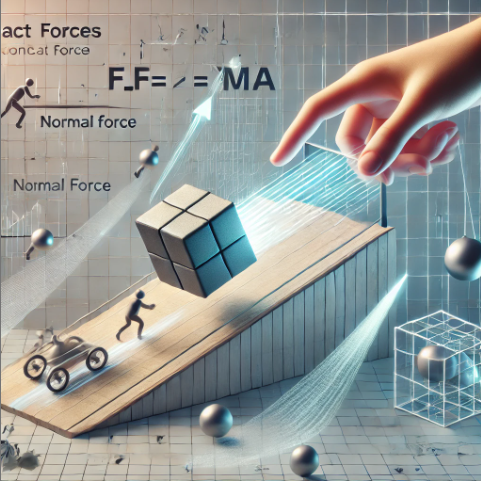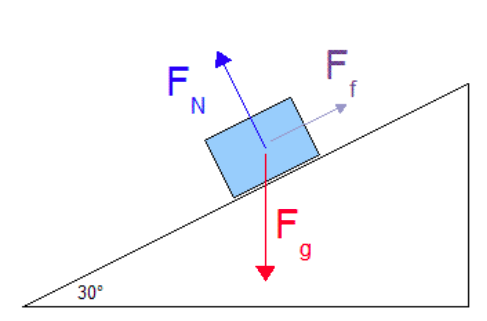Unit 2.3: Contact Forces in AP Physics 1
Understanding Contact Forces ⛓
In physics, a contact force arises when two objects are physically in contact. This type of force is critical for analyzing motion and interactions between objects. By mastering contact forces, you’ll gain a deeper understanding of how forces like tension, friction, and normal forces shape everyday physical phenomena.
Key Contact Forces
Friction
Friction opposes the motion of an object in contact with a surface, enabling us to walk, grip, and control vehicles. There are two main types:- Static Friction: Resists initial movement between surfaces.
- Kinetic Friction: Opposes motion between moving surfaces.
Normal Force
This force acts perpendicular to a surface, supporting an object’s weight. For example, when sitting in a chair, the chair provides an upward normal force to counteract gravity.Tension
Tension transmits force along a rope, string, or wire. When you pull on a rope, the tension force transmits that force through the entire length of the rope.
Illustrating Contact Forces in Free-Body Diagrams
When creating free-body diagrams to represent contact forces, keep these principles in mind:
- Tension: Points along the rope or string in the direction of the force being applied.
- Friction: Opposes the direction of motion.
- Normal Force: Always perpendicular to the surface.
- Spring Force: Opposes the direction of compression or extension.
Example: The diagram of an object on an inclined plane demonstrates key forces, including weight (downward), friction (opposing motion), and the normal force (perpendicular to the surface).
Example Problem: Calculating Normal Force
Problem: A 10.0 kg box is placed on a ramp inclined at 30∘ to the horizontal. Calculate the normal force acting on the box.
Solution:
- Calculate gravitational force:
- Use the normal force equation:
The normal force acting on the box is 86.6 N.
Understanding Hooke’s Law
Hooke’s Law describes how the force exerted by a spring is directly proportional to its displacement:
Where:
- = force exerted by the spring (N)
- = spring constant (N/m)
- = displacement from equilibrium (m)
Note: The negative sign indicates the force is restorative (opposing the displacement).
Example Problem: Calculating Spring Force
Problem: How much force is required to stretch a spring with a spring constant of by 20 m?
Solution:
The force required is 200 N.
Exploring Friction
Friction opposes motion or attempted motion of an object in contact with a surface. Frictional force can be calculated using:
Where:
- = frictional force (N)
- = coefficient of static or kinetic friction
- = normal force (N)
Static vs. Kinetic Friction
- Static Friction: Resists the initial movement of an object. Larger than kinetic friction.
- Kinetic Friction: Acts on moving objects to oppose motion.
Example Problem: Calculating Acceleration on an Inclined Plane
Problem: A 4.00 kg block is placed on a ramp inclined at to the horizontal. The coefficient of friction between the block and ramp is . Calculate the block’s acceleration as it slides.
Solution:
- Calculate gravitational force:
- Calculate normal force:
- Calculate frictional force:
- Calculate the parallel component of gravity:
- Find net force:
- Calculate acceleration:
The block’s acceleration down the ramp is 1.51 m/s².
Key Takeaways on Contact Forces
- Normal Forces support weight and are perpendicular to the contact surface.
- Tension transmits pulling forces.
- Friction resists motion and varies depending on surface conditions.
- Hooke’s Law governs spring force behavior.








